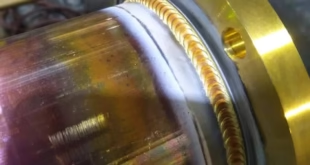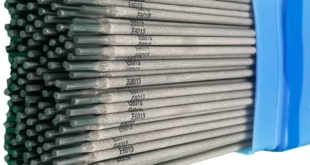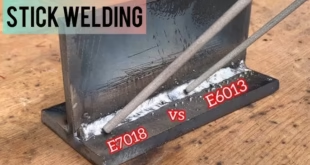Electrode Selection and Application in Welding
Electrode Selection is one of the most important decisions in welding. The strength, durability, and appearance of a weld all hinge on using the correct filler material. With countless electrode types designed for specific metals and applications, understanding how to choose and apply them properly is essential for both weld quality and efficiency.
What Are Welding Electrodes?
Welding electrodes are metal rods—either bare or flux-coated—that conduct current and, in most cases, also melt to become filler metal. The coating on an electrode plays a crucial role in stabilizing the arc and protecting the weld pool from contamination by forming slag and shielding gas.
Different welding processes use different types of electrodes:
SMAW (Stick Welding): Uses flux-coated electrodes.
GMAW (MIG): Employs solid wire electrodes.
GTAW (TIG): Uses non-consumable tungsten electrodes.
Resistance Spot Welding: Uses copper alloy electrodes.
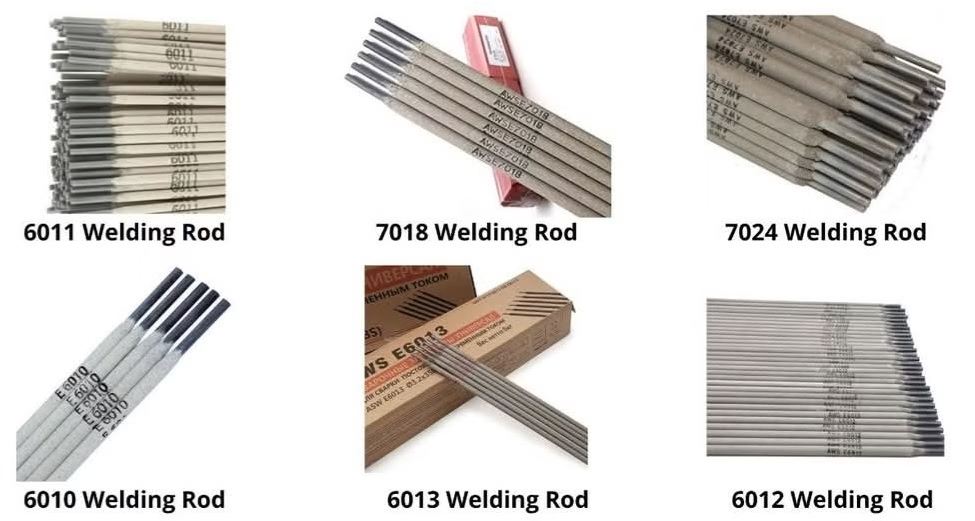
Key Factors in Electrode Selection
Electrode selection isn’t guesswork—it’s based on multiple technical factors:
1. Base Metal Composition
Electrodes must match the chemical and mechanical properties of the base material. Examples include:
Mild & Carbon-Manganese Steel: Offers a wide range of suitable electrodes with similar weld metal output.
Low-Alloy Steels: Require electrodes matched to strength, corrosion, or heat resistance.
Stainless Steel: Must use electrodes with at least equal alloy content to the parent metal.
Aluminum & Alloys: Need specialized electrodes or TIG tungsten for proper welds.
Cast Iron & Copper Alloys: Require specific formulations, often with special polarities or coatings.
2. Welding Process and Power Source
Electrode compatibility varies by process and current/polarity settings:
SMAW Electrodes:
E6010 & E7015: Use DC+ only.
E6013, E7016, E7024: Compatible with AC or DC+.
E6012: Can run on AC or DC-.
GTAW Electrodes:
Pure Tungsten: Used with AC for aluminum.
Thoriated: For DC welding (higher durability but slightly radioactive).
Zirconiated, Ceriated, Lanthanated: Each optimized for different current types and applications.
Arc Gouging Electrodes: Typically used with DCEP for steels and alloys, and with AC or DC- for cast iron.
3. Welding Position and Joint Type
Welding position greatly affects electrode performance. Some are rated for all-position use, while others are limited:
E7024: High-deposition iron powder electrode, used only in flat and horizontal positions.
E6010/E6011: Cellulosic electrodes, ideal for all-position pipe welding, including vertical down.
4. Service Conditions and Weld Properties
The expected service environment determines the needed properties of the weld and, thus, the electrode:
Structural Steel (e.g., bridges, cranes): Often needs low-hydrogen electrodes to prevent cracking.
Wear or Corrosion Resistance: Calls for hardfacing or cladding electrodes.
Some deposit wear-resistant carbides for abrasion.
Others offer shock resistance or heat tolerance.
Electrode Classification Systems
To simplify selection, organizations like AWS and BS categorize electrodes with codes indicating their:
Tensile strength
Welding position
Coating type
Polarity
Special attributes (e.g., low-hydrogen)
For example, E7018 means:
E = electrode
70 = 70,000 psi tensile strength
1 = all positions
8 = low-hydrogen, iron powder coating, and DCEP or AC compatibility
Electrode Coating Types and Functions
The coating isn’t just for arc stability—it’s a complex chemical blend that affects slag behavior, arc type, and weld characteristics. Common types include:
Rutile (Titanium Dioxide): Smooth arc, easy slag removal. Works with AC or DC. Found in E6013, E7014.
Basic (Low-Hydrogen): Contains calcium carbonate/fluoride. Used in E7015, E7016, E7018, offering high-strength and low-porosity welds.
Cellulosic: Organic materials create a high-pressure gas shield and forceful arc. Best for vertical down. E6010, E6011 fall here.
Iron Powder: Boosts deposition rate. Seen in E7024, E7014, E7028.
Acid: Less common, older design using oxides and deoxidizers.
Electrode Size and Current Selection
Electrode size affects how much current it can carry and how deeply it penetrates. Choosing the correct diameter for the material thickness is key:
| Electrode Diameter | Typical Amperage Range |
|---|---|
| 1/8″ (3.2 mm) | 90–150 A |
| 5/32″ (4.0 mm) | 110–210 A |
| 3/16″ (4.8 mm) | 140–240 A |
Base metal thickness
Welding position
Preheat conditions
Too high a current causes spatter and poor control. Too low results in poor penetration and slag inclusion.
Electrode Handling and Storage
Electrodes must be stored properly to retain performance:
Keep dry: Always store in sealed containers or ovens.
Low-hydrogen types: Highly sensitive to moisture. Use quivers on-site (70°C) and holding ovens afterward (120–150°C).
Check for damage: Discolored or cracked coatings can ruin weld quality—discard them.
Neglecting storage practices can lead to hydrogen-induced cracking, porosity, or arc instability.
Specialized Electrode Applications
1. Arc Gouging Electrodes
Used for beveling, back-gouging, and defect removal.
Round, flat, or semiround shapes.
Can be run on AC or DCEP.
2. GTAW Tungsten Electrodes
Pure Tungsten: For AC aluminum welding.
Thoriated: High current capacity, for DC steel/stainless.
Ceriated/Lanthanated: Versatile with DC, better arc starts.
Zirconiated: High-performance AC option.
Proper grinding (conical for DC, balled for AC) ensures arc focus and consistency.
3. Resistance Welding Electrodes
Made from copper alloys (e.g., Cu-Cr-Zr).
Water-cooled for durability.
Electrode shape and surface condition affect weld pressure and heat.
FAQs
Why can’t I use the same electrode for every metal?
Different metals require different filler compositions and flux behaviors. Using the wrong electrode can cause cracking, weak welds, or corrosion.
Can I use AC electrodes on a DC welder?
Some electrodes are AC/DC compatible. Always check the manufacturer’s recommendations and electrode classification.
What’s the best electrode for vertical welding?
Cellulosic-coated rods like E6010 or E6011 are ideal for vertical-down and overhead welding due to their fast-freezing slag.
How should I store E7018 electrodes on-site?
Keep them in a heated quiver (around 70°C). Return unused rods to a holding oven (120–150°C) to prevent moisture absorption.
What does the number “70” in E7018 represent?
It indicates the weld metal’s tensile strength: 70,000 psi.
Conclusion
Electrode selection is more than matching rod to metal—it’s a technical process that balances:
Material compatibility
Process and polarity
Weld position and joint geometry
Service demands and mechanical properties
Understanding coating types, classification codes, and electrode behavior ensures quality, durability, and safety in every weld. Combined with proper storage and handling, using the right electrode helps achieve strong, clean, and cost-effective results.
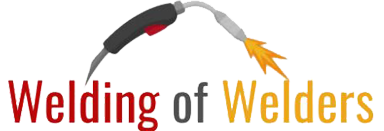 Welding of Welders All about Welding and Welders
Welding of Welders All about Welding and Welders

